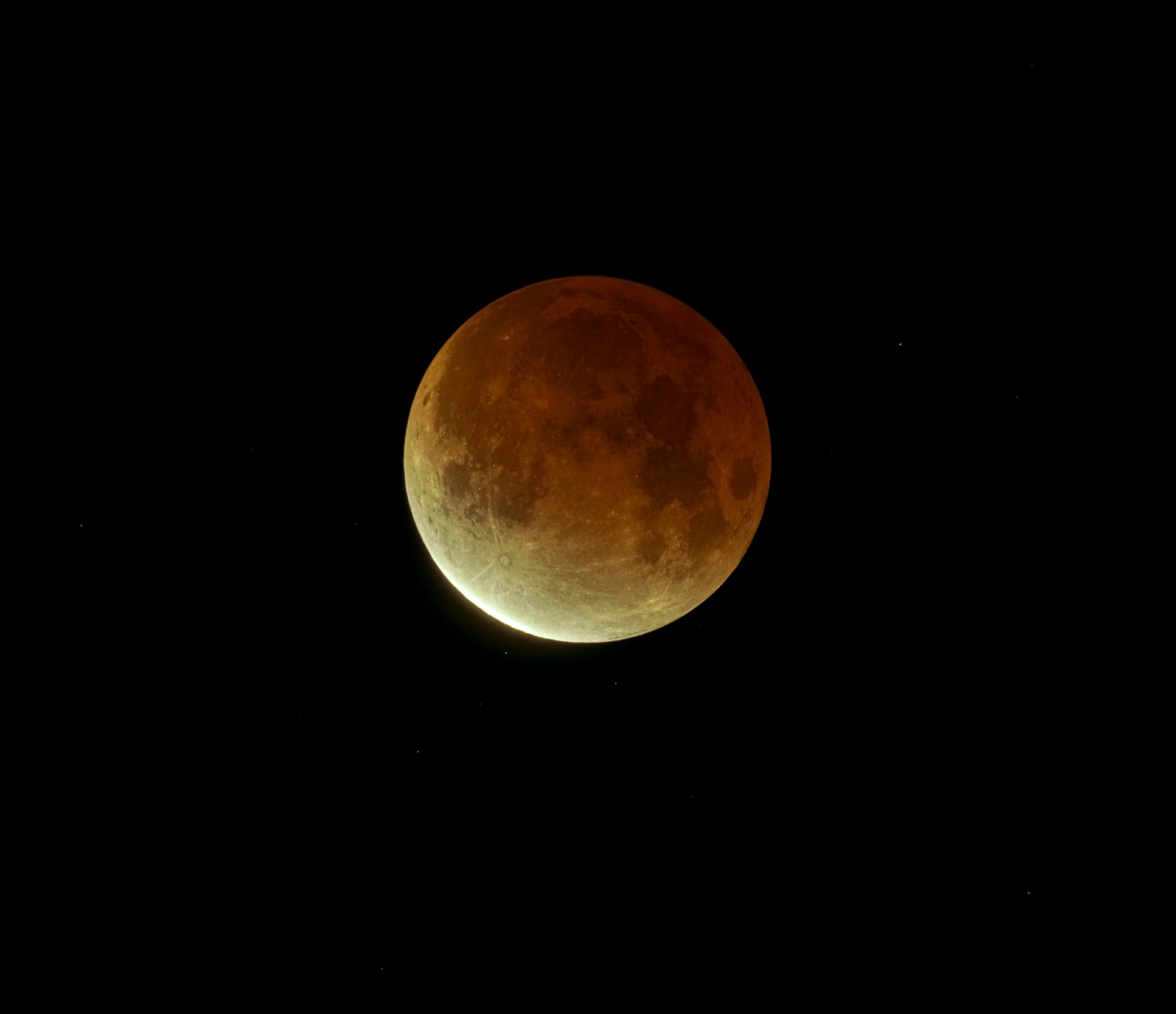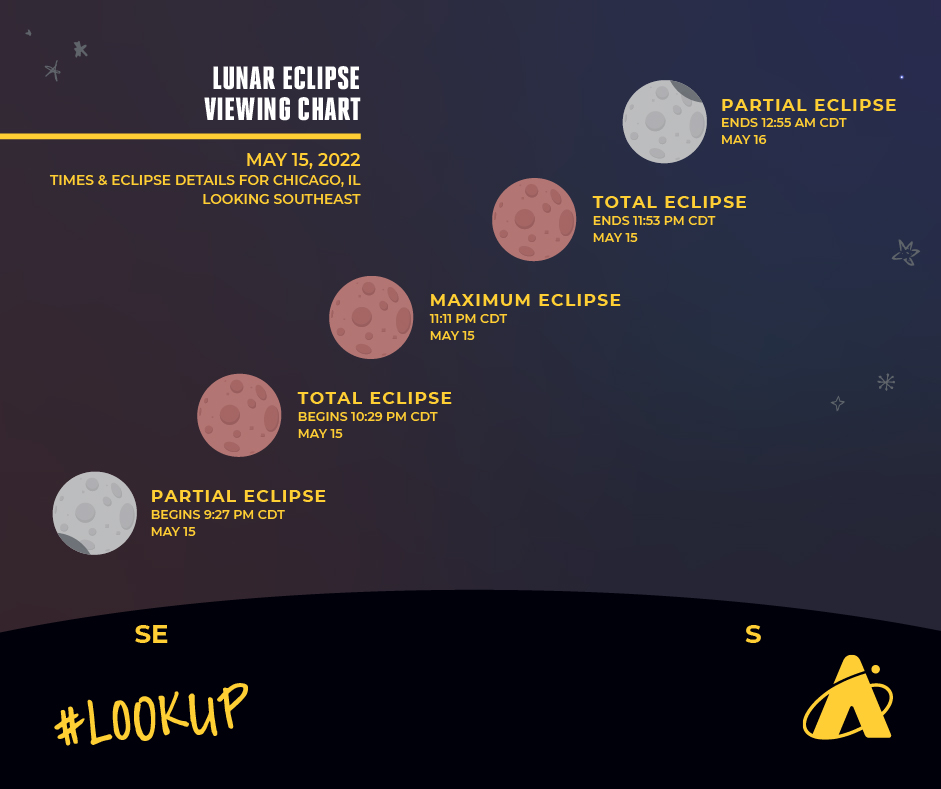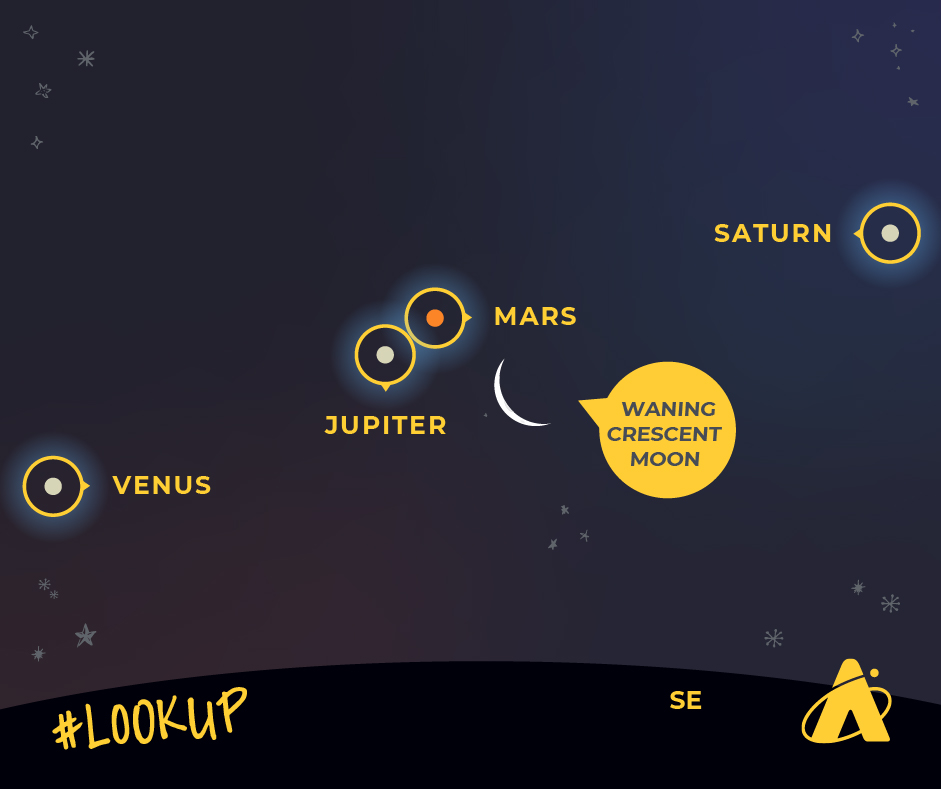Adler Skywatch: May 2022

Header Image: Total lunar eclipse seen in Chicago.
Header Image Credit: Nick Lake
Eclipses don’t happen often. When they do, they come in pairs about two weeks apart. A partial solar eclipse on April 30 overshadows only a small portion of the Southern Hemisphere–but the eastern half of the U.S. gets the chance to see a total lunar eclipse in May 2022.
This lunar eclipse starts on the evening of May 15 and will be easily visible if the weather is clear. In the Chicago area, the eclipse starts at 8:32 pm CT, when the bright Full Moon slowly starts to move into Earth’s shadow. The eclipse’s partial phase begins at 9:27 pm. By this time you may be able to notice the left side of the Moon is growing darker as the hour’s pass. The total phase of the eclipse starts at 10:29 pm, and the Moon reaches the point of greatest eclipse at 11:11 pm. During totality, the darkened Moon may turn a ruddy color, sometimes informally called a “Blood Moon”. Totality ends at 11:53 pm. As the night of May 15 turns into the morning of May 16, the left side of the Moon begins to brighten. The partial-eclipse phase ends at 12:55 am, and the Moon again shines brightly—and un-eclipsed—by 1:50 am on May 16.

This month, most of the planets visible to the unaided eye can be seen shortly before sunrise, low in the east and southeast skies. The first one above the horizon is Saturn, a moderately bright planet that rises about 90 minutes to two hours before the Sun. Next, the planet Mars rises roughly an hour to 90 minutes after Saturn. The two planets are very close in brightness, but Mars has a distinctively reddish tint. Shortly after Mars rises, two other planets rise: first bright Jupiter and then brilliant Venus.
On May 1, Jupiter and Venus appear barely a half-degree apart. As the morning’s pass, Venus appears to pull away from Jupiter and doesn’t get very far above the horizon before dawn breaks. Jupiter, however, moves upward toward Mars each day in the morning twilight. At the start of the month, Jupiter and Mars appear about 15 degrees from each other. Mars is higher, but Jupiter is clearly the brighter of the two. By May 24, the planets are less than five degrees apart and about equally high in the sky. And on May 29, Jupiter and Mars appear a half-degree apart, with Jupiter above Mars in the sky.
If it seems like Venus, Jupiter, Mars, and Saturn are forming a line in the pre-dawn sky, they are. All the planets of the solar system stay close to an imaginary line called the ecliptic, which circles the sky. The Moon also appears close to the ecliptic. On the morning of May 22, the last-quarter Moon appears just below Saturn. On the morning of May 24, the waning crescent Moon appears to the right of Mars. On May 25, the waning crescent is below Jupiter. On May 26, that shrinking crescent is to the right of Venus; and on May 27, it’s to the left of Venus.

The first few days of the month, you may be able to see the planet Mercury in the early evening. Try looking about an hour after the Sun has set, very near the west-northwest horizon. After those first few days, Mercury will be so close to the Sun that it will be difficult if not impossible to see.
First Quarter Moon: May 8
Full Moon: May 15
Last Quarter Moon: May 22
New Moon: May 30
(Please note: these descriptions are for the Chicago area, using Central time.)
Subscribe To Skywatch Wednesday This May
Tour the night sky weekly with the Adler Planetarium’s Theaters Manager Nick, who uses cutting-edge visualizations, NASA images, and astrophotography to show you what you can see in the night sky throughout the year.






